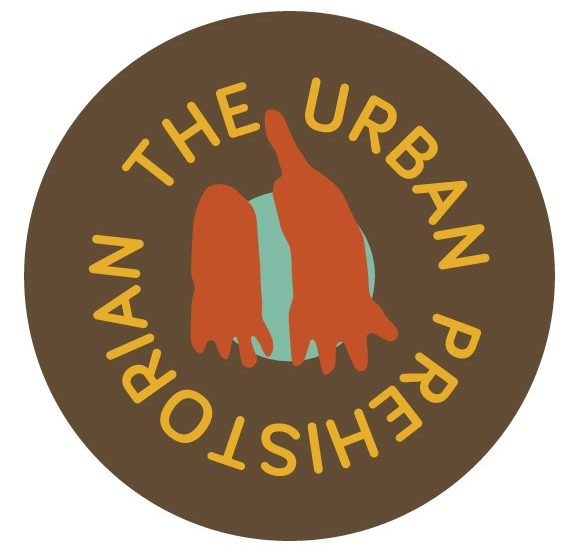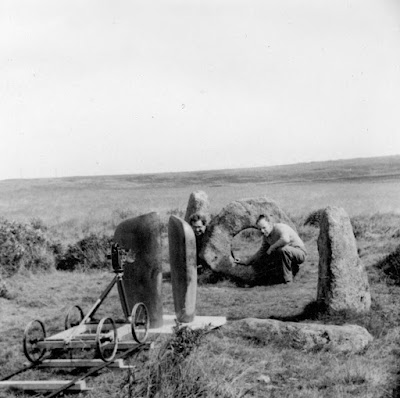The Sighthill stone circle is back in business. Glasgow’s newest megalith, constructed in AD2019 from stones that recently formed a slightly different stone circle that lasted from 1979 to 2016, is now open to the public and available for whatever Glaswegians want to do inside it. The fences have come down, the bridge connection to the city centre has been re-made, and the relationship between standing stone and the sky can now resume.

This stunning image from ReGlasgow shows the emergent urban edgeland landscape that the stone circle now finds itself within, no longer in a park but rather in a landscaped corner of a new housing development. Embedded within the community, ready and willing to be put to use. This is a huge opportunity to see how a stone circle can benefit a new urban community (albeit it a very different community to the one that was moved out to allow this new development to happen), and I am curious to follow its journey in the coming years.

One of the uses of the stone circle – hard-wired into the monument by the creator of both incarnations, Duncan Lunan – is as an astronomical observatory (listen to much more about the circles’s history on the Stone Me podcast), and so when Duncan asked me (and some others) to take some photos at the circle on or around the 2023 solstices, it was the first chance to test and document Duncan’s arrangement of the monument without having to ask permission or climb through a gap in a fence. Aside from the summer solstice being horribly early in the morning, this seemed like an easy task.
It was also a great opportunity to visit the stone circle to document another key skyscape event, having been at the earlier incarnation of the circle for a partial eclipse of the sun on 20th March 2015 and Spring Equinox on 20th March 2016.


For the summer solstice, we were given helpful instructions by Duncan, namely to stand with my back to the centre stone (serving as a backsight) and look to the horizon eastwards. The sun should rise soon after 4.30am right over a small standing stone within a setting of three, the marker stone. Make the foreground darker, ensure the globe of the sun is clear, and get snappy.
Coincidentally this marker stone was numbered Stone 001 during a baseline photography survey of the circle I did in September 2021 before I had worked out its actual job title.

Jan and I visited the stone circle on the Saturday before the solstice to get our heads around the horizon views and where to stand for photos. This was the first time we had been since the fence came down and it was a joyful experience.

I was further prepared for the early morning task by preparatory photographs sent to me by Duncan and a plot showing the route of the sun prepared by Grahame Gardner aka Western Geomancy.




All that could stop me now was the weather and so it proved with a mediocre cloudy misty forecast for the actual solstice itself, 22nd June 2023. The next morning looked a lot more promising so we set the alarm for 330am and had an earlyish night. We arrived about ten past 4 and Grahame was already there with a timelapse camera set-up.
There followed a period of time that was profoundly exciting and frustrating, waiting for the sun, hoping that clouds would not obscure the view, becoming curiously annoyed at the dawn for not breaking, almost as if its being late meant that it might never happen.
Cameras were fiddled with. Mobile phones consulted. Diagrams and photos of solstice events in the past were checked and double-checked. Just in case. Killing time waiting for some magic to happen.


Waiting in the orange glow of anticipation.


The day got impossibly bright for a sky with no sun in it. The allotted time had passed. Maybe the sun had come up and we just couldn’t see it? A guy in lycra riding a bike arrived and he got his camera out too. Fiddling and waiting, waiting and fiddling. Fiddling while the sky burned.
Then something special started to happen.

Seconds of relief that an entirely predictable event that could not fail to happen was now happening. Giving over quickly to emotion, joy, awe, magic, an overwhelming sense that this was truly special and that this was a perfect moment in the perfect place to experience this moment. A moment that all three of us were able to record although this was not a time for staring at screens or through viewfinders any more than necessary.



The guy who had come on his bike casually leaned on a standing stone, almost as if it has been designed for this purpose, and took in the awesome sight.

As the sun painstakingly climbed in the sky, what most struck me was the curious way that it was both moving unbelievably slowly, but at the same time going very fast. Relative to the centre of the galaxy, the sun is moving at 200km per second. Here on earth we orbit around the sun at 107,000 km per hour (source). None of these dizzying speeds was apparent of course, our minds and eyes unable to comprehend such space mechanics. On the horizon it looked like a bright orange bug climbing up a blueish window, a casually tossed smartie in slow motion about to describe a parabola in the sky.
The orb’s brightness has an incredible intensity, although we could still look at it. The orange-ness was remarkable, quite unlike the yellow of a summer day sun. It was only getting warmed up, but already the sky was on fire.

The virginal sun cast almost no shadows, something that surprised us. This is because Duncan had asked for us to document some other effects that had been built into the stone circle: “A shot of the shadow of the marker stone on the central stone, and one of the central stone’s shadow on the southeast solar stone, would also be good”. Sorry Duncan, no can do!

I’ve often wondered about the relationship between shadows and standing stones, and how this might have been exploited, and understood in prehistory. So it is interesting that this phenomenon has been built into the monument as well. Pity it was not apparent that morning.
So – Sighthill stone circle works. Not that we needed to get up before 4am to prove that. The effect that we saw that summer morning was of course pure science and mathematics masquerading as theatre. What we saw was built into the monument, which was designed to work this way and it was not possible that any other outcome could have happened. The prefigured nature of all of this is humbling, a level of reliability that we rarely find these days.

The nature of stone circles and the sun is that they never stop interacting and so this will all happen again and again for centuries (here’s an account from 2010), but also in different ways during the solar cycle. However, the sky does not always play ball.
Mission 2 (which I chose not to accept because I missed the email!) was for the equinox sunrise on 23rd September at 7.04am. This time the sun would rise above a car showroom to the east of the stone circle. Duncan hoped that we could go along in case he could not make it.

In the end only Grahame was there, and it was cloudy.
The same fate befell us on the second solstice day of the year – winter solstice in December 22nd 2023. This time the opportunity arose for both sunrise and sunset solstices without this being too long a day as it was not a long day, the going up of the sun and the setting of the same being only around 7 hours apart.
As before, Duncan had primed us with some visual aids.



But the weather forecast was not promising for a week either side of the solstice and so my visit on the morning of 22/12/23 was dark, drizzly and disappointing. Except visiting this stone circle is never really a disappointment despite the dreary weather and the motorway noise. I was right there on the border between day and night, prehistory and the present.

A recently worn desire line, probably left by a cyclist passing through the circle (maybe lycra guy from the summer solstice), pointed the way towards reflected early daylight on residential windows, the circle overlooked by Christmas trees and faintly illuminated by urban electric lighting. But the sun did not make an appearance at dawn or dusk that day.

Such is the fate of heavenly bodies, not always observable for very human, or meteorological reasons. But Sighthill is a stone circle for all seasons, and many archaeoastronomical observations. It works and I would encourage anyone who has not done so before to get out of bed early, get to the circle, and wait for the sun. This stone circle might be urban, and it might be less than five years old, but when megaliths and the sun get together, age and location no longer matter.
Acknowledgements – I would like to thank Duncan Lunan for his advice and help, and for trusting me to do some of this recording for him. He also provided many of the images used in this blog, reproduced with permission and relevant picture credits in captions. Thanks also to Jan and Grahame for being there!
Worth noting that one of my pictures of the summer solstice was used in this Glasgow Live story uncredited, not the first time they have done this to me…


















































































































